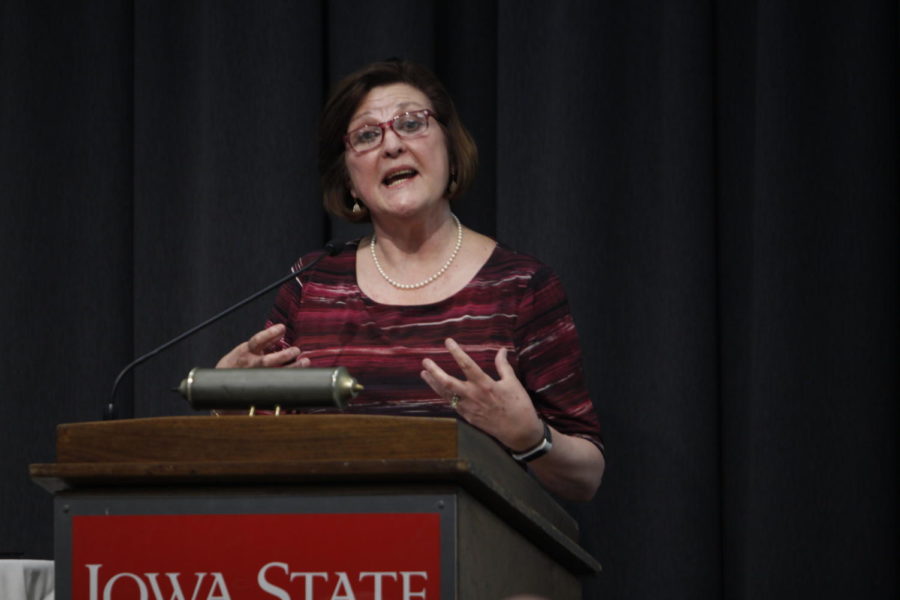Lecturer discusses gendered media coverage of presidential candidates
Dianne Bystrom, director emeritus of the Carrie Chapman Catt Center for Women and Politics at Iowa State, speaks about how the media treats men and women in politics differently. “My dissertation research actually got some attention this year from reporters because there was a lot of comparisons between 2018 and 1992,” Bystrom said.
April 24, 2019
Dianne Bystrom, director emerita of the Carrie Chapman Catt Center for Women and Politics, discussed the gendered media coverage of women presidential candidates in her lecture titled “But Is She ‘Likable’: Gendered Media Coverage of Women Presidential Candidates” Wednesday night.
Throughout much of her own research, as well as analysis of secondary research, Bystrom and her colleagues found media coverage of female candidates to be gendered, with a tendency to portray female candidates more negatively than their male counterparts.
Word choice, points of criticism, amount of coverage on policies and positions and amount of coverage on image and personal life in the media were main points of consideration throughout this research.
“[Hillary] Clinton was mentioned as having ‘negative ambition,’ ‘unbridled ambition’ and ‘ruthless ambition,'” Bystrom said of the 2016 election. “On the other hand … [Bernie] Sanders was praised as having ‘ambitious plans.’ Donald Trump was praised for having an ‘ambitious deportation program,’ as well as ‘ambitious real estate development.’ [Trump] himself was praised as being ‘proud and ambitious.'”
In her presentation, Bystrom included a word cloud collected by Gallup between July 19, 2016, and Sept. 19, 2016 composed of the words that potential voters recalled seeing in the past two days in reference to the two 2016 presidential candidates — Hillary Clinton and Donald Trump. Trump’s top words included “immigration,” “convention speech” and “president,” indicating a primary focus on his policies and positions. Clinton’s top words included “email” and “health,” indicating a primary focus on her scandals and image, said Bystrom.
Bystrom included a brief history of women presidential candidates in the United States before moving on to more recent media coverage. She contrasted media coverage between 1992, considered to be the “Year of the Woman Candidate,” and media coverage from more recent female presidential campaigns, beginning primarily with Clinton’s 2008 campaign.
Bystrom discussed the possible reasoning behind these differences in media coverage between female and male presidential candidates, including what has been described by social psychologist Alice Eagly as the “double bind.”
“Research suggests that American women are trapped in this paradox in our culture that is often referred to as the double bind,” Bystrom said. “The feminine expectation role [states that] women are supposed to be … nice, kind [and] compassionate. Leaders on the other hand … are supposed to take charge, [and] be tough and assertive. If women are pursuing a leadership role in politics or business or higher education, they are caught in this double bind of conflicting expectations.”
Bystrom suggested potential solutions to this problem of gendered media coverage, based on her own research as well as that of her colleagues and fellow researchers. Some of these suggestions included increasing diversity in newsrooms, allowing more women to write op-ed pieces and hold senior executive positions in the media world, and increasing media literacy among its consumers.
“We need to be better consumers of political information,” Bystrom said. “We need to hold the media accountable. We need to understand these gendered frames, and remove ourselves from them. We need to call out sexism when we see it.”

















